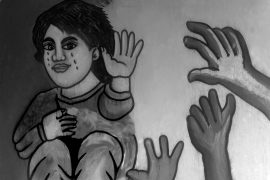In the ancient Indian mythology of the Rig Veda, written over 3000 years ago, the tale posited for the phenomena of the solar eclipse is that of the demon Svarbhānu, who conquers the sun with “overwhelming darkness.”
Svarbhānu’s backstory is one of ambition, betrayal and revenge.
The Gods (Devas) and Demons (Asuras) were churning the sea with a mountain called Mandhara. The result was the Amrutha, an elixir of immortality. Vishnu, one of the Devas, takes the form of a beautiful dancer named Mohini and distributes the elixir to demon and god alike. Svarbhānu sneaks into the queue and seats himself between the Sun and the Moon. Just as he is being served the drink, the celestial beings snitch on him.
Chop! Mohini beheads Svarbhānu with the serving ladle. But the devious Asura had already taken his sip. His dissected body – two parts now named Rahu and Ketu – spent the rest of their time trying to consume the Sun and the Moon in revenge.
Revered as the Vedas were, ancient Indian astronomers were not wholly convinced. In the 4-5th century A.D., the astronomer Surya Siddhanta explained what an eclipse was – the moon passing over the sun – and described ways of calculating one. His contemporary from the 5th century, Aryabhatta, also took a matter-of-fact tone to explain the celestial phenomenon.
-30-
Copyright©Madras Courier, All Rights Reserved. You may share using our article tools. Please don't cut articles from madrascourier.com and redistribute by email, post to the web, mobile phone or social media.Please send in your feed back and comments to [email protected]











